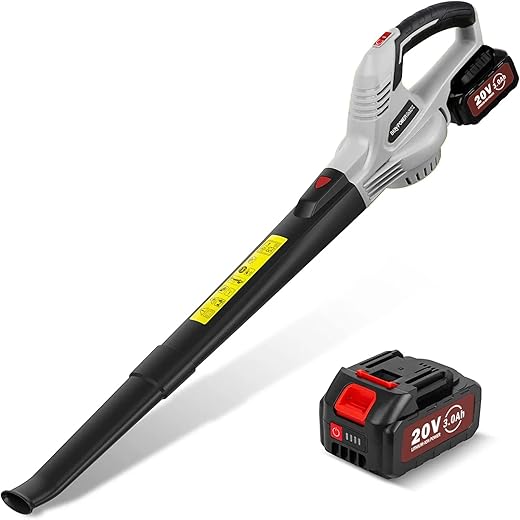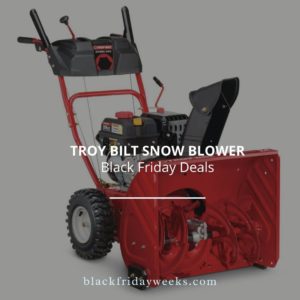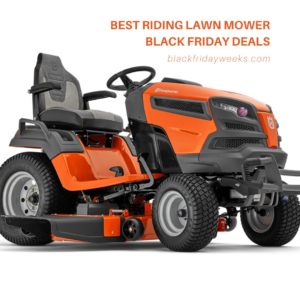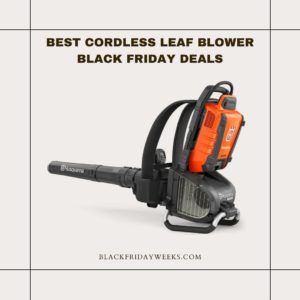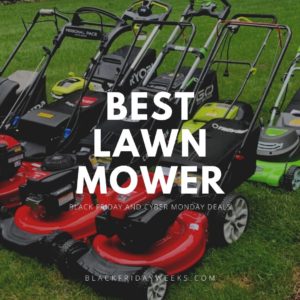A cordless leaf blower is a portable and battery-powered tool designed to efficiently clear leaves, debris, and grass clippings from outdoor areas. It offers the convenience of mobility without the restrictions of a power cord or the noise and emissions associated with gas-powered blowers. Cordless leaf blowers are commonly used in residential settings, as well as small to medium-sized yards, gardens, and driveways.
These leaf blowers typically feature a rechargeable lithium-ion battery that provides the power needed for blowing leaves and debris. The battery-powered design allows for freedom of movement and flexibility in reaching areas that may be farther away from electrical outlets. The battery runtime varies depending on the model and battery capacity, ranging from around 20 minutes to over an hour.
Cordless leaf blowers are lightweight, compact, and easy to maneuver, making them suitable for users of all ages and physical abilities. They often have adjustable speed settings, allowing you to customize the air velocity and control the intensity of the airflow for different tasks.
One of the key advantages of cordless leaf blowers is their quieter operation compared to gas-powered blowers. They produce less noise, which can be beneficial in noise-sensitive environments or when working in residential areas.
When choosing a cordless leaf blower, consider factors such as battery runtime, airspeed and volume, weight, ergonomic design, and additional features like a mulching function or interchangeable battery compatibility with other cordless tools. These features can enhance the overall performance and versatility of the leaf blower.
Cordless leaf blowers offer a convenient and environmentally friendly solution for keeping outdoor spaces clean and tidy. They provide an efficient alternative to manual raking and can significantly reduce the time and effort required for leaf and debris removal.
What is cordless leaf blower used for?
A cordless leaf blower is a versatile tool used for various outdoor tasks, primarily focused on clearing leaves and debris. Here are some common uses for a cordless leaf blower:
- Leaf and Debris Removal: The primary purpose of a cordless leaf blower is to efficiently clear leaves and other lightweight debris from your lawn, garden, patio, driveway, or other outdoor areas. It provides a powerful airstream that blows leaves into piles for easy collection or moves them to desired locations.
- Lawn Maintenance: Cordless leaf blowers can assist in maintaining the appearance of your lawn. They can be used to clear grass clippings after mowing, removing them from walkways, driveways, or flower beds.
- Clearing Gutters: With the appropriate attachments or accessories, a cordless leaf blower can help clear leaves, twigs, and other debris from gutters. This can help prevent clogs and ensure proper drainage.
- Snow Removal: Some cordless leaf blowers offer attachments or functions for light snow removal. They can help clear snow from driveways, sidewalks, and pathways, particularly when the snow is powdery or not too heavy.
- Cleaning Workshops or Garages: Cordless leaf blowers can be useful for blowing away dust, dirt, and sawdust from workshops, garages, or other indoor spaces. They can help keep these areas clean and tidy.
- Outdoor Cleanup: Apart from leaves, cordless leaf blowers can be handy for clearing dirt, small twigs, grass clippings, and other debris from outdoor surfaces, such as patios, decks, and porches.
- Drying Surfaces: Cordless leaf blowers can be used to quickly dry wet surfaces, such as a wet car after washing, or to speed up the drying process of freshly washed outdoor furniture or equipment.
Cordless leaf blowers provide the advantage of portability and freedom of movement, as they are not limited by a power cord. This makes them versatile tools for a range of outdoor cleanup and maintenance tasks.
What is the difference between a leaf blower and a leaf sweeper?
The main difference between a leaf blower and a leaf sweeper lies in the way they handle and move debris.
- Leaf Blower: A leaf blower uses a powerful air stream to blow leaves, grass clippings, and other debris away. It propels the debris forward or to the side, allowing you to clear a designated area. Leaf blowers are available in various types, including gas-powered, corded electric, and cordless electric models. They are effective for moving large volumes of debris, especially when you need to cover a wide area or blow the debris into a pile for later collection.
- Leaf Sweeper: A leaf sweeper, also known as a lawn sweeper or leaf collector, is designed to gather and collect leaves and other light debris from the ground. It typically consists of a rotating brush mechanism that lifts the debris into a collection bag or hopper as you push or tow the sweeper across the lawn. Leaf sweepers are commonly pushed manually or attached to a riding lawn mower or tractor for larger areas. They are ideal for efficiently collecting leaves without the need for blowing them around.
In summary, a leaf blower uses a powerful airstream to blow debris away, while a leaf sweeper is designed to collect and gather debris from the ground into a collection bag or hopper. Leaf blowers are versatile for moving debris, while leaf sweepers are more specialized in collecting and removing leaves. The choice between the two depends on your specific needs and preferences, as well as the type of debris and the size of the area you need to clean.
Are cordless leaf blowers as powerful as corded?
Cordless leaf blowers have come a long way in terms of power and performance, but they may not always match the raw power of corded leaf blowers. Corded leaf blowers are typically powered by an electrical outlet and can provide consistent and sustained power during operation.
Cordless leaf blowers, on the other hand, rely on battery power, which can limit their maximum power output and runtime. However, advancements in battery technology have significantly improved the performance of cordless leaf blowers in recent years. Higher voltage lithium-ion batteries and brushless motors have contributed to increased power and improved efficiency.
While cordless leaf blowers may not reach the same power levels as corded models, they can still provide sufficient power for most residential or small to medium-sized outdoor cleaning tasks. The blowing force, measured in miles per hour (mph) or cubic feet per minute (CFM), can vary among different cordless leaf blower models. Some cordless leaf blowers can achieve airspeeds of 120 mph or more and airflow volumes of several hundred CFM.
It’s important to note that the power output of a leaf blower is just one factor to consider. The effectiveness of a leaf blower also depends on the design of the nozzle, airflow concentration, and the type of debris you’re dealing with. Leaf blowers with variable speed settings allow you to adjust the power output to suit different tasks and maximize efficiency.
If you have large or demanding cleaning projects or require continuous operation without worrying about battery runtime, a corded leaf blower may be a more suitable option. However, for most residential or light-duty applications, cordless leaf blowers provide ample power and the added benefit of portability and convenience without the hassle of cords or the need for an electrical outlet.
What is better for cordless leaf blower speed or volume?
When comparing the airspeed and airflow volume of a cordless leaf blower, it’s important to consider your specific needs and the type of tasks you’ll be performing. Both speed and volume play a role in determining the effectiveness of a leaf blower, but their importance depends on the nature of the debris you’re dealing with.
- Airspeed: Airspeed refers to the velocity at which the air exits the blower nozzle and is typically measured in miles per hour (mph). Higher airspeed can be beneficial for tasks that require moving lightweight debris, such as leaves or grass clippings, over a distance. It helps create a concentrated and forceful stream of air that can effectively push the debris away.
- Airflow Volume: Airflow volume refers to the amount of air that the blower can move and is typically measured in cubic feet per minute (CFM). Higher airflow volume can be advantageous for tasks that involve moving larger or heavier debris, such as twigs, branches, or wet leaves. It provides a broader coverage area and helps dislodge and clear a larger volume of debris.
Ideally, a good cordless leaf blower should offer a balance between airspeed and airflow volume to handle a variety of tasks effectively. Some models allow you to adjust the power settings, allowing you to customize the airspeed and volume based on the specific requirements of the task at hand.
For general leaf blowing and maintenance tasks, a balanced combination of airspeed and airflow volume is often more important than focusing solely on one aspect. However, if you frequently deal with heavy debris or need to move material over a long distance, a higher airflow volume may be more advantageous.
Ultimately, the best choice depends on your specific needs and the type of cleaning tasks you regularly perform. Consider the characteristics of the areas you’ll be clearing, the size and weight of the debris, and your desired cleaning efficiency when deciding which factor, speed or volume, is more crucial for your cordless leaf blower.
Are cordless leaf blowers loud?
Compared to gas-powered leaf blowers, cordless leaf blowers tend to be quieter. They produce less noise during operation, making them more suitable for use in noise-sensitive environments or residential areas where noise regulations may be in place.
The noise level of a cordless leaf blower can vary depending on the specific model and power setting used. However, most cordless leaf blowers are designed to operate at lower noise levels compared to gas-powered counterparts. Manufacturers often prioritize reducing noise output in their cordless models, resulting in a more pleasant and less disruptive user experience.
While cordless leaf blowers are generally quieter, it’s important to note that they still produce some level of noise during operation. The noise level is typically measured in decibels (dB), and it’s advisable to check the manufacturer’s specifications for the specific model you are considering. Some cordless leaf blowers offer noise reduction features or technology to further minimize the noise generated.
When using any leaf blower, including cordless models, it’s always a good idea to consider the comfort and well-being of yourself and those around you. If you anticipate using the leaf blower for extended periods or in noise-sensitive areas, you may want to consider wearing hearing protection to further reduce the impact of noise exposure.
In summary, while cordless leaf blowers are generally quieter than gas-powered alternatives, the actual noise level can vary among different models. It’s best to check the specifications and consider the noise output along with other factors when choosing a cordless leaf blower.
What is the lightest and most powerful cordless leaf blower?
As of my knowledge cutoff in September 2021, it’s difficult to pinpoint the lightest and most powerful cordless leaf blower, as new models and advancements are constantly being introduced to the market. However, I can provide some general information about lightweight and powerful cordless leaf blowers based on popular options available at that time.
- EGO Power+ LB6002: This model is known for its impressive power and performance, offering airspeeds up to 142 mph and an airflow volume of up to 600 CFM. It is lightweight, weighing around 7.4 pounds without the battery.
- Greenworks Pro GBL80320: This leaf blower delivers airspeeds up to 125 mph and an airflow volume of 500 CFM. It weighs approximately 8 pounds, making it relatively lightweight for its power output.
- DEWALT DCBL770X1: This leaf blower features airspeeds of up to 175 mph and an airflow volume of 423 CFM. It weighs around 9.8 pounds with the battery included.
It’s important to note that the weight and power of cordless leaf blowers can vary depending on the specific model and battery used. Manufacturers are continually working on improving their products, so newer models may offer even better power-to-weight ratios. When considering a cordless leaf blower, it’s advisable to research the latest options available and compare their specifications to find the best balance between power, weight, and other features that suit your specific needs.
How long does cordless leaf blower last?
The battery life or runtime of a cordless leaf blower can vary depending on several factors, including the battery capacity, power setting, and the specific model you’re using. As of my knowledge cutoff in September 2021, cordless leaf blowers typically offer battery runtimes ranging from 15 minutes to over an hour.
The battery capacity is a key determinant of how long a cordless leaf blower will last. Higher-capacity batteries can provide longer runtimes before requiring recharging. The battery capacity is usually measured in ampere-hours (Ah). For example, a leaf blower with a 2.0 Ah battery might offer around 20 minutes of runtime, while a leaf blower with a 5.0 Ah battery could provide an hour or more of continuous use.
It’s important to consider that the power setting you use will also affect the runtime. Higher power settings generally consume more battery power and result in shorter runtimes. Most cordless leaf blowers offer adjustable speed settings, allowing you to customize the power output and balance it with the desired runtime.
Additionally, different tasks and conditions may impact battery life. For example, using the leaf blower on higher settings or dealing with heavier debris might reduce the runtime compared to lighter tasks such as blowing leaves or grass clippings.
It’s worth noting that battery technology continues to advance, and newer models may offer longer runtimes than older ones. When considering a cordless leaf blower, it’s advisable to check the manufacturer’s specifications or user reviews to get a better understanding of the expected battery life for the specific model you are interested in.
Is it worth getting a cordless leaf blower?
Whether or not a cordless leaf blower is worth getting depends on your specific needs, preferences, and circumstances. Here are some factors to consider when deciding if a cordless leaf blower is the right choice for you:
- Mobility and Convenience: Cordless leaf blowers offer the advantage of mobility and freedom of movement. Without the need for a power cord, you can easily maneuver around your yard or outdoor space without restrictions. This can be especially beneficial if you have a large yard or if you need to reach areas far from electrical outlets.
- Ease of Use: Cordless leaf blowers are generally lightweight and easy to handle, making them suitable for users of various ages and physical abilities. They often have user-friendly features such as push-button start, adjustable speed settings, and ergonomic designs that enhance comfort during use.
- Noise and Emissions: Compared to gas-powered leaf blowers, cordless leaf blowers tend to be quieter and produce no emissions. This can be advantageous if you live in a noise-sensitive neighborhood or if you prioritize reducing your carbon footprint.
- Battery Runtime: Consider the battery runtime of the cordless leaf blower you’re interested in. The runtime can vary depending on the battery capacity and the power setting used. If you have a small to medium-sized yard and the runtime is sufficient for your needs, a cordless leaf blower can be a practical choice.
- Power Output: Assess the power output of the cordless leaf blower, including airspeed and airflow volume, to ensure it meets your specific requirements. While cordless models may not match the raw power of corded or gas-powered blowers, they can still provide adequate power for most residential or light-duty tasks.
- Cost: Cordless leaf blowers can have a higher upfront cost compared to corded models, primarily due to the inclusion of a battery and charger. However, over time, they can offer cost savings by eliminating the need for gas and oil refills.
Consider your budget, the size of your outdoor area, the type and amount of debris you need to clear, and your personal preferences when deciding if a cordless leaf blower is worth it for you. It’s also helpful to read reviews, compare different models, and weigh the pros and cons before making a decision.
How to use cordless leaf blower
Using a cordless leaf blower is generally straightforward and easy. Here are the general steps to follow:
- Charge the Battery: Ensure that the battery of your cordless leaf blower is fully charged before use. Follow the manufacturer’s instructions for charging, as the charging time may vary depending on the battery and charger.
- Safety Precautions: Put on any necessary safety gear, such as safety glasses, ear protection, and gloves, to protect yourself during operation. It’s also a good idea to wear closed-toe shoes and consider wearing a dust mask if you anticipate working in dusty conditions.
- Familiarize Yourself with the Controls: Take a moment to familiarize yourself with the controls and settings of your cordless leaf blower. Locate the power switch, speed settings (if applicable), and any other relevant controls.
- Adjust the Speed Setting: If your cordless leaf blower has adjustable speed settings, choose the appropriate setting based on the task at hand. Lower speeds are generally suitable for lighter debris or more delicate surfaces, while higher speeds provide more power for heavier debris or larger areas.
- Hold the Blower Properly: Hold the handle of the leaf blower with a firm grip, keeping your fingers away from the air intake and nozzle. Maintain a comfortable and balanced stance.
- Start the Leaf Blower: Depending on the model, you may need to press a power button or trigger to start the leaf blower. Refer to the manufacturer’s instructions for the specific starting procedure.
- Direct the Airflow: Point the nozzle of the leaf blower in the direction you want to move the debris. Start from the area farthest away from where you want to collect the debris and work your way towards that spot.
- Sweep in a Controlled Motion: Move the leaf blower in a sweeping motion from side to side or back and forth, using the forceful air stream to blow the debris in the desired direction. Adjust your speed and the angle of the nozzle to effectively move and collect the debris.
- Clean Up and Shut Down: Once you’ve cleared the desired area, power off the leaf blower by releasing the power button or trigger. Take the time to clean up any remaining debris or leaves manually, if needed. Store your cordless leaf blower in a safe and dry place, following any specific storage instructions provided by the manufacturer.
Remember to always follow the manufacturer’s instructions and safety guidelines specific to your cordless leaf blower model. These general steps should provide a basic overview of how to use a cordless leaf blower, but it’s always important to consult the user manual for detailed instructions and safety precautions.
What should I look for in a cordless leaf blower?
When looking for a cordless leaf blower, there are several factors to consider to ensure you choose the right one for your needs. Here are some key features and considerations to look for:
- Power and Performance: Evaluate the power output of the leaf blower, including airspeed (measured in miles per hour, or mph) and airflow volume (measured in cubic feet per minute, or CFM). A higher airspeed and airflow volume generally indicate greater blowing power, which can help you tackle various types of debris and cleaning tasks.
- Battery Life and Runtime: Consider the battery life and runtime of the cordless leaf blower. Look for a model with a battery capacity that matches your needs and provides sufficient runtime for the size of your outdoor area or the tasks you intend to perform. Keep in mind that higher power settings may result in shorter battery life.
- Battery Charging Time: Check the charging time of the battery. Ideally, you want a battery that charges relatively quickly, allowing you to minimize downtime between uses. Some cordless leaf blowers come with fast-charging capabilities or offer interchangeable batteries for continuous operation.
- Battery Compatibility: If you already own cordless tools from the same brand, check if the leaf blower’s battery is compatible with your existing tools. This can be convenient, as it allows you to share batteries and chargers, saving both cost and space.
- Weight and Ergonomics: Consider the weight and ergonomics of the leaf blower. Look for a model that is lightweight and well-balanced to minimize fatigue during use. Ergonomic features such as padded handles and adjustable tubes can enhance comfort and usability.
- Noise Level: Cordless leaf blowers are generally quieter than gas-powered models, but noise levels can still vary. If noise is a concern for you, look for a leaf blower that offers reduced noise emissions or has specific noise-reduction features.
- Adjustable Speed Settings: Some cordless leaf blowers allow you to adjust the speed or power settings. This feature can be useful for different tasks, allowing you to optimize the blowing power based on the debris type or the area you’re working in.
- Durability and Build Quality: Assess the overall build quality and durability of the leaf blower. Look for models made with sturdy materials that can withstand regular use and potential outdoor conditions.
- Warranty and Customer Support: Check the warranty provided by the manufacturer. A longer warranty period indicates the manufacturer’s confidence in the product’s quality. Additionally, consider the availability of customer support and service centers in case you need assistance or repairs.
- Reviews and Recommendations: Read customer reviews and seek recommendations from trusted sources to gain insights into the performance, reliability, and overall user experience of specific cordless leaf blower models.
By considering these factors and prioritizing your specific needs and preferences, you can make an informed decision when choosing a cordless leaf blower that best suits your requirements.
How long does cordless leaf blower last?
The lifespan of a cordless leaf blower can vary depending on several factors, including the quality of the product, how well it is maintained, and frequency of use. Here are some factors to consider when assessing the lifespan of a cordless leaf blower:
- Build Quality: The overall build quality and durability of the leaf blower play a significant role in its lifespan. Higher-quality models with sturdy construction and robust components tend to last longer than cheaper, less durable options.
- Brand and Model: Established brands that have a reputation for producing reliable and durable tools often offer leaf blowers with longer lifespans. Additionally, certain models may be designed to withstand more extensive and prolonged use, increasing their lifespan.
- Maintenance: Regular maintenance and proper care can significantly extend the lifespan of a cordless leaf blower. This includes following the manufacturer’s maintenance instructions, such as cleaning the blower, checking for loose or damaged parts, and storing it in a dry and protected environment.
- Battery Life: The lifespan of the leaf blower’s battery also affects its overall longevity. Batteries have a limited number of charge cycles before they start to degrade. High-quality batteries and proper charging practices can help maximize the battery’s lifespan.
- Usage Patterns: How often and for what duration the leaf blower is used can impact its lifespan. If it is used frequently or for prolonged periods, it may experience more wear and tear compared to occasional or light use.
While it is difficult to provide an exact lifespan for a cordless leaf blower, with proper care and maintenance, a well-built and well-maintained cordless leaf blower can typically last for several years. It’s important to remember that individual experiences may vary, and unforeseen circumstances or accidents can impact the lifespan of any tool.
Do you really need a cordless leaf blower?
Whether or not you need a cordless leaf blower depends on your specific circumstances, preferences, and the tasks you need to accomplish. Here are some factors to consider when deciding if a cordless leaf blower is necessary for you:
- Size of the Property: If you have a large property with ample outdoor space and a significant amount of trees or foliage, a cordless leaf blower can be a valuable tool. It can help you efficiently clear leaves and debris from a wide area without the limitations of a power cord.
- Mobility and Portability: A cordless leaf blower provides the advantage of mobility and portability. You can move freely around your property without being tethered to a power source or worrying about cord length. This can be particularly beneficial for larger yards or areas where access to power outlets is limited.
- Noise Considerations: Cordless leaf blowers tend to be quieter compared to gas-powered leaf blowers. If noise is a concern for you, such as living in a noise-sensitive neighborhood or having close neighbors, a cordless leaf blower may be a more suitable option.
- Environmental Considerations: Cordless leaf blowers are generally considered more environmentally friendly than gas-powered alternatives, as they produce zero emissions and do not require fuel. If reducing your carbon footprint is important to you, a cordless leaf blower aligns better with eco-friendly practices.
- Convenience and Ease of Use: Cordless leaf blowers are easy to start, operate, and maintain compared to gas-powered models. They do not require mixing fuel or dealing with engine maintenance. If you prefer a hassle-free and user-friendly tool, a cordless leaf blower can be a convenient choice.
- Personal Physical Ability: If you have physical limitations or find it challenging to handle heavy or bulky equipment, a cordless leaf blower’s lightweight design and ease of use may make it a more suitable option.
However, it’s important to note that a cordless leaf blower may not be necessary for everyone. If you have a small yard with minimal leaves or prefer manual methods for leaf cleanup, such as raking or using a broom, a cordless leaf blower may not be essential.
Ultimately, the decision to purchase a cordless leaf blower depends on your specific needs, budget, and priorities. Consider your unique circumstances and evaluate how a cordless leaf blower would enhance your outdoor maintenance and leaf clearing tasks.
You May Also Like These Deals!
Troy Bilt Snow Blower Black Friday Deals
Troy Bilt is a trusted name in snow blowers, and...
Read MoreBest Riding Lawn Mower Black Friday Deals
Are you searching for the Best Riding Lawn Mower Black Friday Deals?...
Read MoreBest Cordless Leaf Blower Black Friday Deals
If spending your weekend raking leaves and sweeping grass cuttings...
Read MoreBest Lawn Mower Black Friday and Cyber Monday Deals
Are you in the market for a new lawn mower?...
Read MoreProducts recommended in the post contain affiliate links. We may receive a commission when you buy something through our posts.
Why Trust Us
You will find what you are looking for at Black Friday Weeks. From classic to luxury brands, you'll find both. We will help you to select appliances that fit your needs, budget and lifestyle. Whether you want to stop by to learn more — or plan to make a major purchase — we’ll treat you like family and assist you every step of the way. Shop with us today to receive friendly and experienced help along the way.





